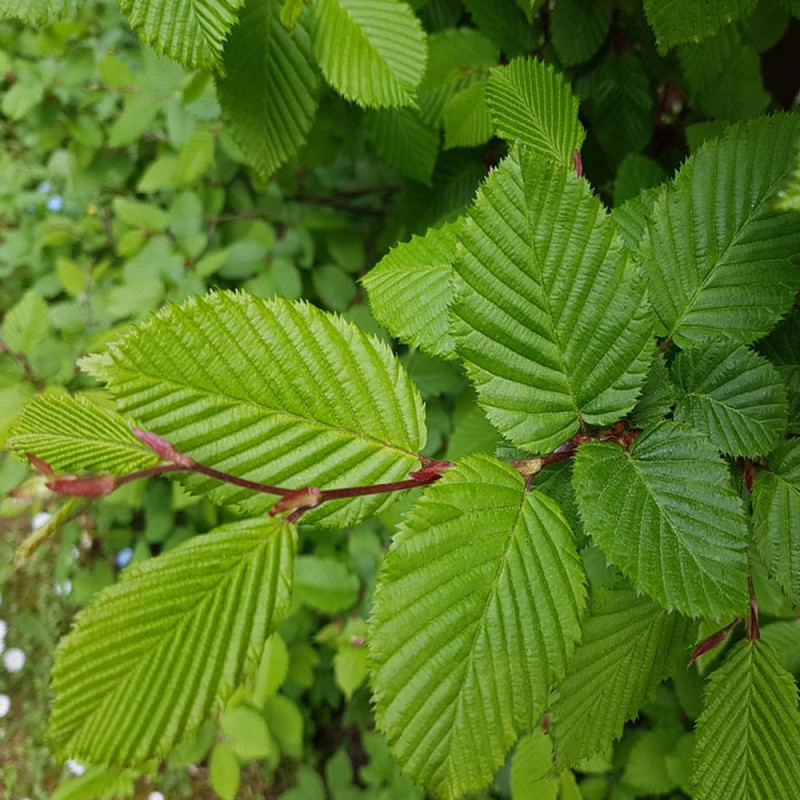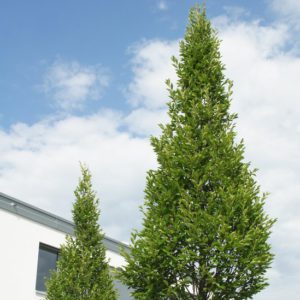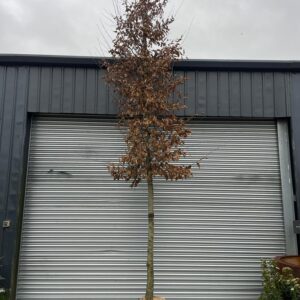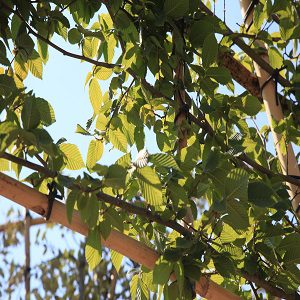Carpinus betulus / Hornbeam
Price range: €250.00 through €750.00
Frequently Bought Together


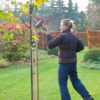
Description
Quick Facts
- Common Name: Common Hornbeam, European Hornbeam
- Botanical Name: Carpinus betulus
- Plant Type: Deciduous tree
- Mature Height: 15-25m (unpruned), 2-5m (as hedging)
- Mature Spread: 8-12m (unpruned), 1-2m (as hedging)
- Flowering Period: April to May
- Flower Colour: Yellow-green catkins
- Foliage: Fresh green leaves turning golden-yellow in autumn
- Hardiness: RHS H7 (very hardy)
- Soil Requirements: Moist, well-drained, tolerates most soil types
- Aspect: Full sun to partial shade
- Maintenance: Low to moderate (depending on use)
Description
Discover the timeless elegance of Carpinus betulus, the magnificent Common Hornbeam that brings year-round structure and seasonal beauty to Irish gardens with its exceptional versatility and graceful presence. This outstanding native tree offers the rare combination of formal architectural potential and naturalistic charm, creating everything from stately specimen trees to impeccably tailored hedges that retain their russet leaves throughout winter, providing privacy and interest when gardens need it most.
From spring through autumn, this captivating tree displays its distinctive pleated leaves of fresh bright green that create a fine-textured canopy, whilst in spring, elegant yellow-green catkins dangle gracefully from the branches. As autumn arrives, the foliage transforms into warm shades of golden-yellow and amber, creating a spectacular seasonal display. The unique characteristic of retaining dried leaves throughout winter—a quality known as marcescence—ensures that hornbeam hedges provide screening and structure even in the dormant season, whilst the attractive fluted grey bark adds winter interest to specimen trees.
Native to Europe including parts of Ireland, this remarkable species has been treasured for centuries in formal gardens and parklands. Exceptionally hardy and adaptable, hornbeam thrives in Irish conditions, tolerating heavy clay soils, exposed sites, and urban pollution whilst maintaining its elegant form. The dense, hard wood and responsive growth habit make this the premier choice for formal hedging, pleached screens, and topiary, rivalling beech but with superior tolerance of challenging conditions.
Create stunning formal compositions by planting as clipped hedges for elegant garden rooms and boundaries, or train as pleached screens for sophisticated architectural features. Magnificent as specimen trees in lawns where their graceful form can be fully appreciated, in avenues for grand approaches, or in mixed woodland plantings with oak, beech, and field maple. Underplant with spring bulbs, bluebells, and woodland perennials where their dappled shade will bring timeless structure, seasonal drama, and enduring beauty to your Irish garden sanctuary.
Caragh Garden Notebook
Planting: For hedging, space plants 45-60cm apart in a single row, or 60cm apart in a staggered double row for denser screens. For specimen trees, allow 8-12m spacing. Plant bare-root trees from November to March, or container-grown specimens year-round. Dig holes twice the width of the root ball and incorporate organic matter. Plant at the same depth as the nursery soil mark. Water thoroughly and mulch around the base.
Soil Preparation: Thrives in a wide range of soil types with pH 5.5-8.0, from heavy clay to light loam. Prefers moist, well-drained conditions but tolerates both damp sites and periodic drought once established. One of the most adaptable trees for challenging soils. Incorporate organic matter to improve soil structure. Avoid only extremely waterlogged or very dry, shallow soils.
Container Growing: Young specimens suitable for large containers (minimum 60cm diameter) using soil-based compost. Water regularly during growing season. Feed in spring with slow-release balanced fertiliser. Suitable for temporary container growing for 3-5 years before planting out. Ideal for creating instant impact on patios whilst establishing.
Seasonal Care: For hedging, trim twice annually—once in late July/early August after the first flush of growth, and again in late autumn if needed for formal appearance. For specimen trees, minimal pruning required—simply remove dead, damaged, or crossing branches in late winter. Apply slow-release balanced fertiliser in early spring for young plants. Mulch annually to retain moisture and suppress weeds. Water during prolonged dry spells for the first 2-3 years.
Propagation: Propagate from seed collected in autumn and sown immediately, though germination can take 18 months. Alternatively, take hardwood cuttings in late autumn or winter. Layering is also successful for lower branches. Most gardeners prefer to purchase bare-root or container-grown plants for hedging and specimen planting for guaranteed quality and faster results.

